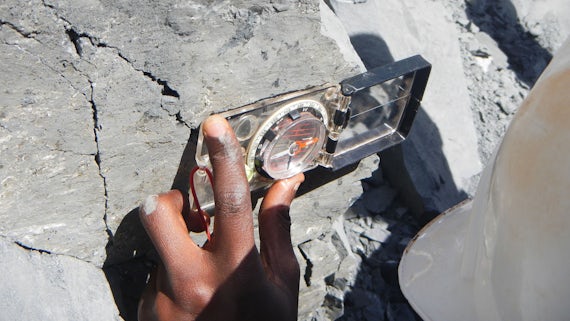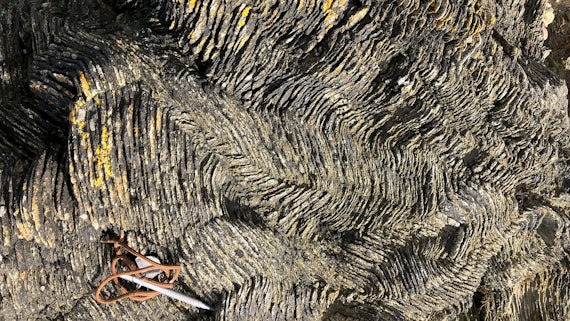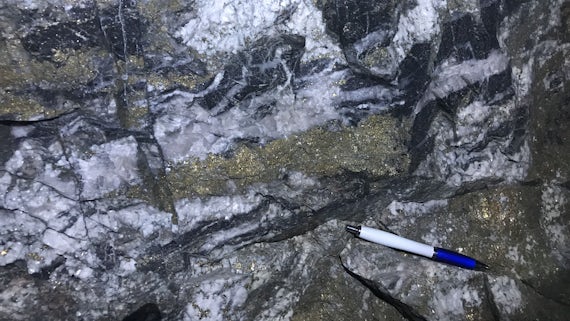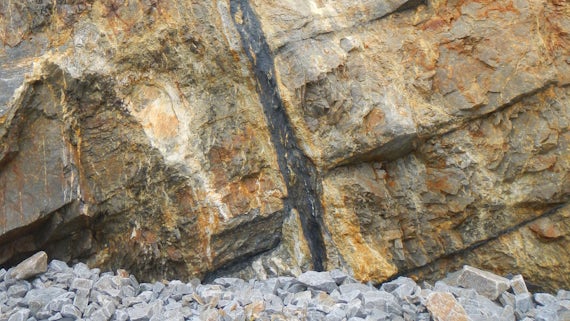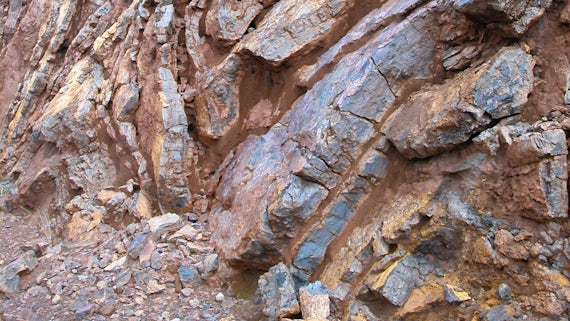Adapting an existing drill core course exclusively for a global mining company
Following several successful iterations of the Structural Geology for Exploration and Mining (SGEM) open course, we collaborated with the School of Earth and Environmental Sciences to adapt the delivery for a leading global mining company.
Our client approached the university following positive feedback from their employees who completed the SGEM pilot in Spring/Summer 2020. They felt that the university’s online training course would be relevant for geologists across their global sites, however they needed the learning materials to be made available for an extended period of 12 months to accommodate different working patterns and allow employees to undertake learning at the most appropriate time of year for them. They also asked for more live sessions with the lead academic, Professor Thomas Blenkinsop, and for these to be scheduled to accommodate the working patterns of their employees across different time zones.
We consulted with the client to understand their requirements, and organised course access for over 140 of their employees at several mining sites across Australia, North and South America, Africa and Canada. We scheduled live sessions around participant availability, supported the learner experience, provided e-certificates to those who passed the end of course test, and worked with the client to evaluate the impact of the training.
This collaboration strengthened an already established relationship between the client and academics from the University’s School of Earth and Environmental Sciences, particularly Professor Thomas Blenkinsop, who developed the Structural Geology short course and has over 30 years’ experience in structural analysis.
Impact
The course has had a significant positive impact, including delivering knowledge of drill core that is not available comprehensively from other sources. It has taught geologists with varying levels of experience how to implement a unified and systematic approach to structural analysis, including new and simple methods of dealing with structures such as lineations, folds and shear zones. It has provided a foundation for further learning, acting as a pre-requisite to an ‘Applied Structural Field Mapping’ course.
Past participants reported that the course improved their overall understanding of structural geology and its application. Further feedback confirmed that the content was organised and well planned, the online delivery effective, and the presentation engaging. Those relatively new to structural geology said that the course provided a great foundation knowledge, and those more experienced in the field commented that it provided a valuable refresher and chance to re-learn what had been forgotten over time. Highlights for past participants included learning about core measurements as well as collecting data from oriented core.

Demand for this course has greatly exceeded what we imagined – and it is continuing. This reflects the importance of the topic, which is well-recognised in the exploration and mining community. But many geologists are not so confident in their structural geology. An online course is a very convenient way to remedy the situation. The live sessions have been a particular highlight. They bring an important personal element to the teaching, and from my point of view, it is fascinating to hear about the experiences and problems of geologists from all over the world. The questions that come in during the live sessions are really interesting, and show that the intersection of a drillhole with the complexity of a vast underground mineral deposit creates an endlessly beguiling set of circumstances. Solving the problems of where these ore bodies are, and how they formed, will be critical to providing the minerals needed for net zero.
Programme overview
This course introduces the importance of structural analysis in mineral exploration, as well as how to record, analyse and present data.
Topics covered include:
- geometry and formation of structures in deformed rocks
- structures as seen in drill core
- an introduction to drilling and ore bodies
- structural measurements needed in drill core
- a systematic and unified method for measuring planar and linear structures.
The course consisted of a series of bite-size learning activities, which overall equated to approximately 20 hours of learning. Delivery included illustrated articles, videos, quizzes and an online discussion forum. There were also live online sessions, led by Professor Blenkinsop, which provided a more detailed discussion, and Q&A sessions around the structural controls on mineralisation.
Find out more information about the course.
Contact us
If you would like to discuss how we could work with your organisation to create a tailored or bespoke course, please contact our friendly team for an initial informal chat. Or take a look at our range of case studies to see some of our most recent projects.
Continuing Professional Development Unit
This online course will equip you with skills to use GIS to make maps and to visualise and analyse a variety of spatial data.
